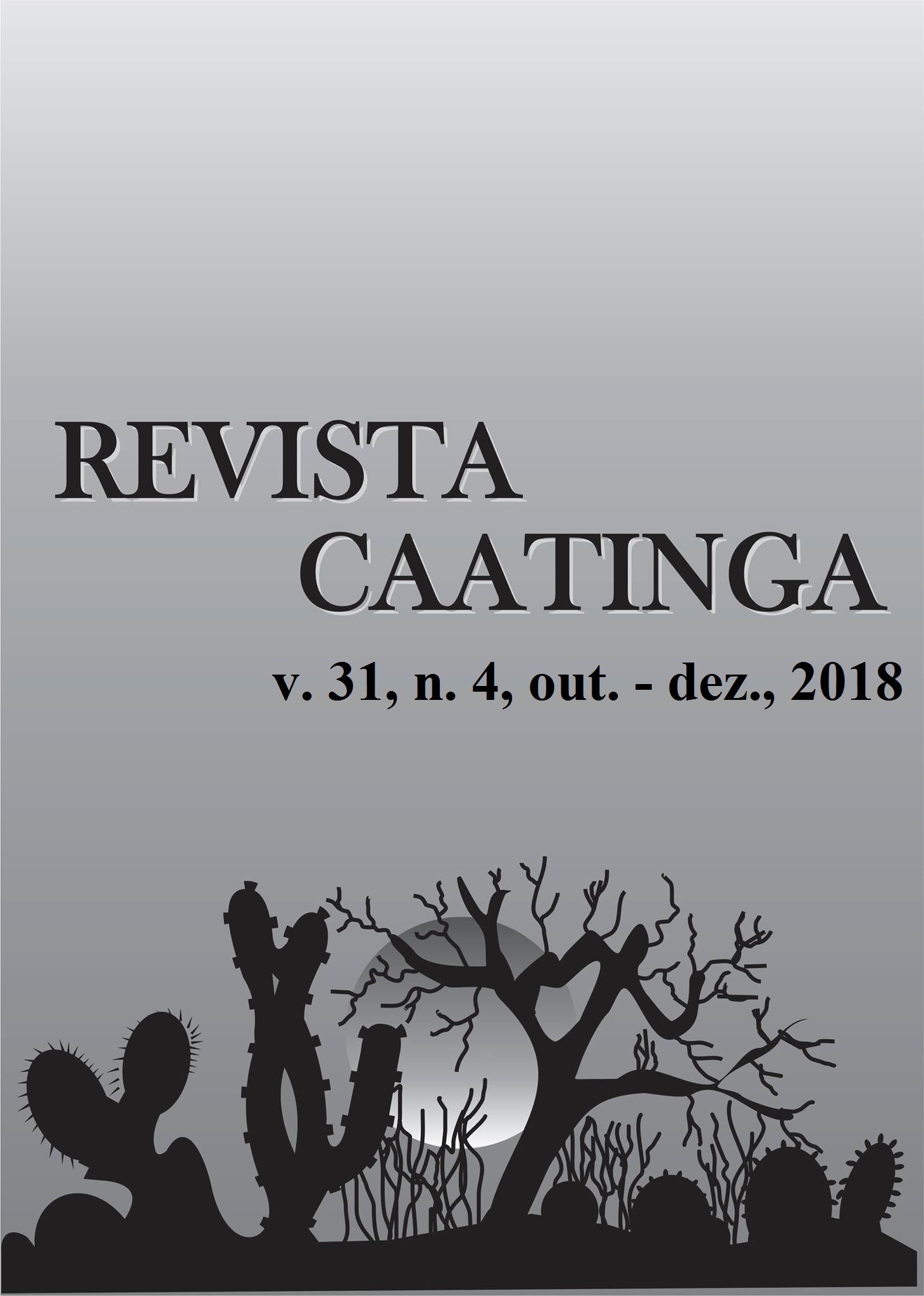PHOTOSYNTHETIC PARAMETERS AS PHYSIOLOGICAL INDICATORS OF TOLERANCE TO CADMIUM STRESS IN SUNFLOWER GENOTYPES
DOI:
https://doi.org/10.1590/1983-21252018v31n413rcKeywords:
Stomatal conductance. CO2 net assimilation. Photosynthesis. Helianthus annuus.Abstract
The objective of the present study was to evaluate the tolerance to cadmium (Cd) of sunflower genotypes grown in greenhouse conditions, and the effectiveness of using photosynthetic parameters as physiological indicators of this tolerance. Seeds of two sunflower genotypes previously identified as tolerant (H358) and Cd-sensitive (AG960) to Cd were used. The seeds were germinated in plastic cups containing plant substrate; after 9 days, the seedlings were transplanted to plastic basins containing a nutrient solution with 0 or 10 µM of Cd, where they remained for 16 days. Samples of the plants were harvested every 5 days. The experiment was carried out in a randomized complete design, using a 4×2×2 factorial arrangement (4 days of grown in a nutrient solution with Cd, 2 sunflower genotypes, and 2 Cd levels) with four replications. Cd stress decreased CO2 net assimilation, stomatal conductance, carboxylation efficiency, photosynthetic pigment contents, potential quantum yield (Fv/Fm), and effective quantum yield of plants of the two evaluated genotypes. The decrease in photosynthetic rates of these plants was caused by both stomatal and non-stomatal limitations. Plants of the AG960 genotype showed more pronounced deleterious effects due to Cd stress than those of the H358 genotype. Thus, CO2 net assimilation rate, stomatal conductance, and chloroplast pigment content are good physiological indicators of sunflower tolerance to Cd and can at least in part, explain the greater tolerance of the H358 genotype to Cd stress when compared to the AG960 genotype.
Downloads
Downloads
Published
Issue
Section
License
Os Autores que publicam na Revista Caatinga concordam com os seguintes termos:
a) Os Autores mantêm os direitos autorais e concedem à revista o direito de primeira publicação, com o trabalho simultaneamente licenciado sob a Licença Creative Commons do tipo atribuição CC-BY, para todo o conteúdo do periódico, exceto onde estiver identificado, que permite o compartilhamento do trabalho com reconhecimento da autoria e publicação inicial nesta revista, sem fins comerciais.
b) Os Autores têm autorização para distribuição não-exclusiva da versão do trabalho publicada nesta revista (ex.: publicar em repositório institucional ou como capítulo de livro), com reconhecimento de autoria e publicação inicial nesta revista.
c) Os Autores têm permissão e são estimulados a publicar e distribuir seu trabalho online (ex.: em repositórios institucionais ou na sua página pessoal) a qualquer ponto antes ou durante o processo editorial, já que isso pode gerar alterações produtivas, bem como aumentar o impacto e a citação do trabalho publicado (Veja O Efeito do Acesso Livre).







